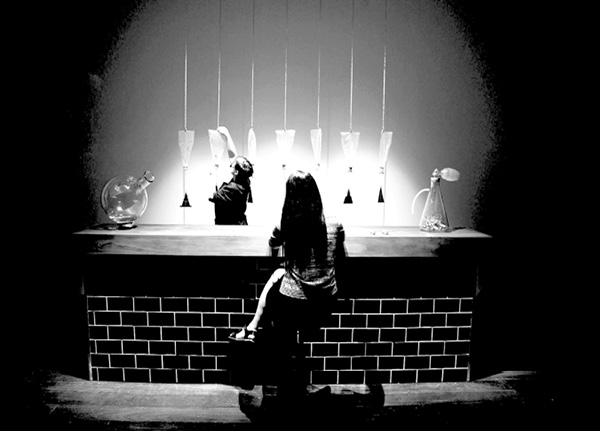
DIFFERENT KINDS OF AIR, A PLANT’S DIARY
first performed on October 22, 2014
Fremantle Arts Centre, Perth, Australia
performed 106 times in 2014
EMILY PARSONS-LORD
Perth / Sydney, Australia
015408927e015408927.015408927p015408927a015408927r015408927s015408927o015408927n015408927s015408927l015408927o015408927r015408927d015408927@015408927g015408927m015408927a015408927i015408927l015408927.015408927c015408927o015408927m
DIFFERENT KINDS OF AIR, A PLANT’S DIARY
EMILY PARSONS-LORD
The purpose of the performance is to viscerally connect the individual to discourses surrounding climate change and the traces of the anthropocene in the air. Performed as part of the Proximity Festival, “Different Kinds of Air, a Plant’s Diary” was a twelve-minute, one-to-one performance, installed as an air tasting bar that offered the audience member the opportunity to taste the air from different eras in Earth’s history.
300-350 million years ago oxygen levels were nearly double what they are today, supporting mega flora and fauna. 252.5 million years ago, the Earth experienced the greatest extinction event with 93-97% of species on land dying out and a simultaneous spike in carbon dioxide levels. The history of the atmosphere on Earth is inexorably linked to the history of life.
“Different Kinds of Air, a Plant’s Diary” offers the audience the opportunity to taste the air from some of these different eras in Earth’s evolution. The gaseous composition, temperature, taste, and smell of air has changed drastically over the course of geological history; these differences affect human physiology, emotional states, and consciousness.
What do these airs taste like? How do they make you feel? How do they affect your body, your consciousness and your memory?
Through physically breathing these air samples the audience experiences a visceral connection with the life that existed in the past, and a tactile and ethical encounter with some air of the future. It mediates on the scale of the earth and the scale of deep time.
The culmination of the work is the presentation to the audience of “future air.” This air (actually sulphur hexafluoride, a seductively heavy, non-harmful to humans, human synthesised gas) is the most potent greenhouse gas that has yet been tested. It has the warming potential of 24,000 times that of carbon dioxide, and will be in the atmosphere for around 300-400 years. When inhaled, it acts as the opposite to helium—lowering the timbre of the voice. The immediacy of holding this seductive air in the hands of the audience member, and the invitation to try it, with the full knowledge of its warming potential, presents a real choice between desire and curiosity, and the sensation of responsibility and connection to the future of air.